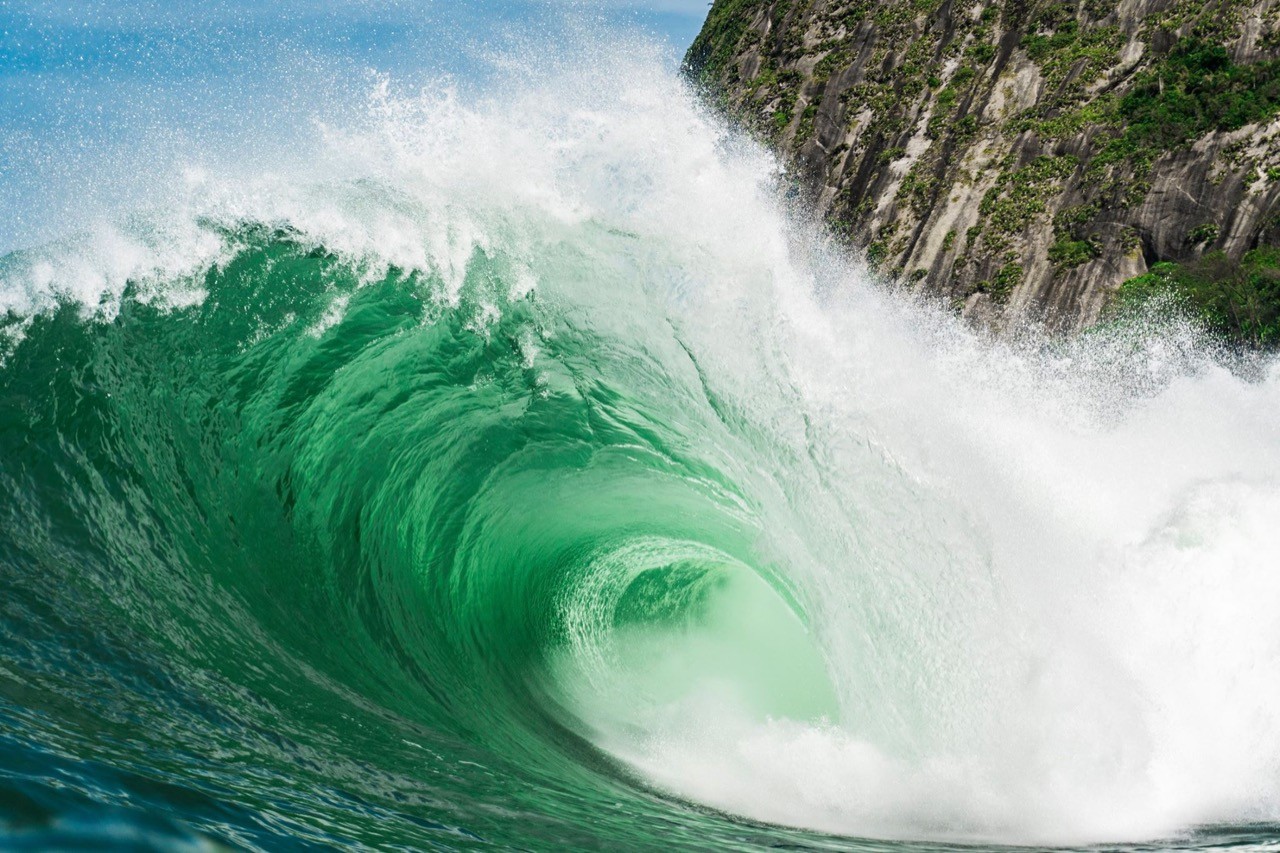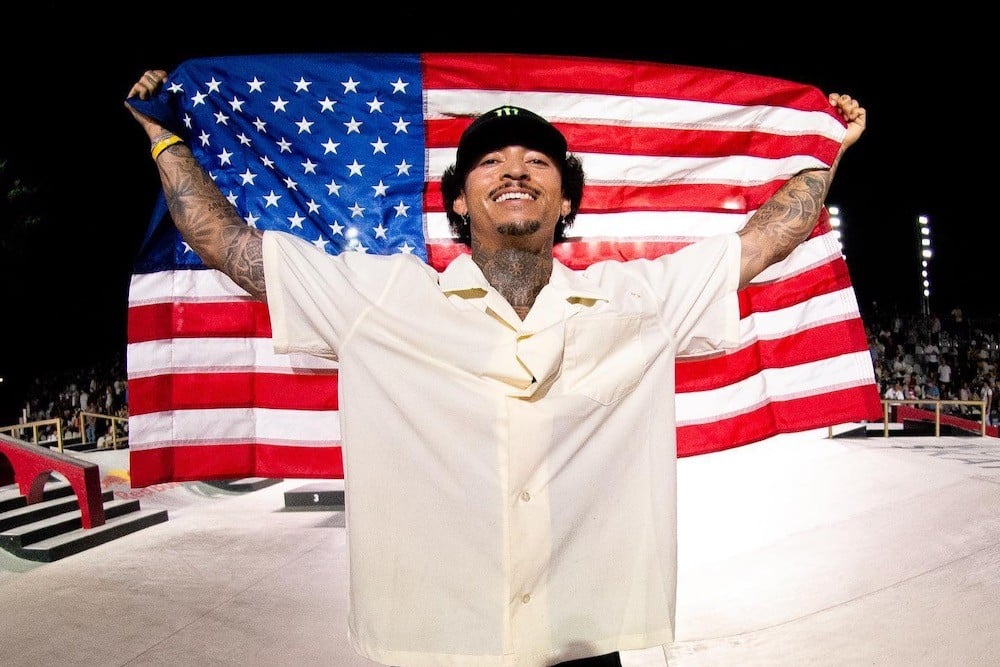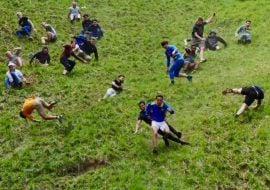Why Being Different is Rad
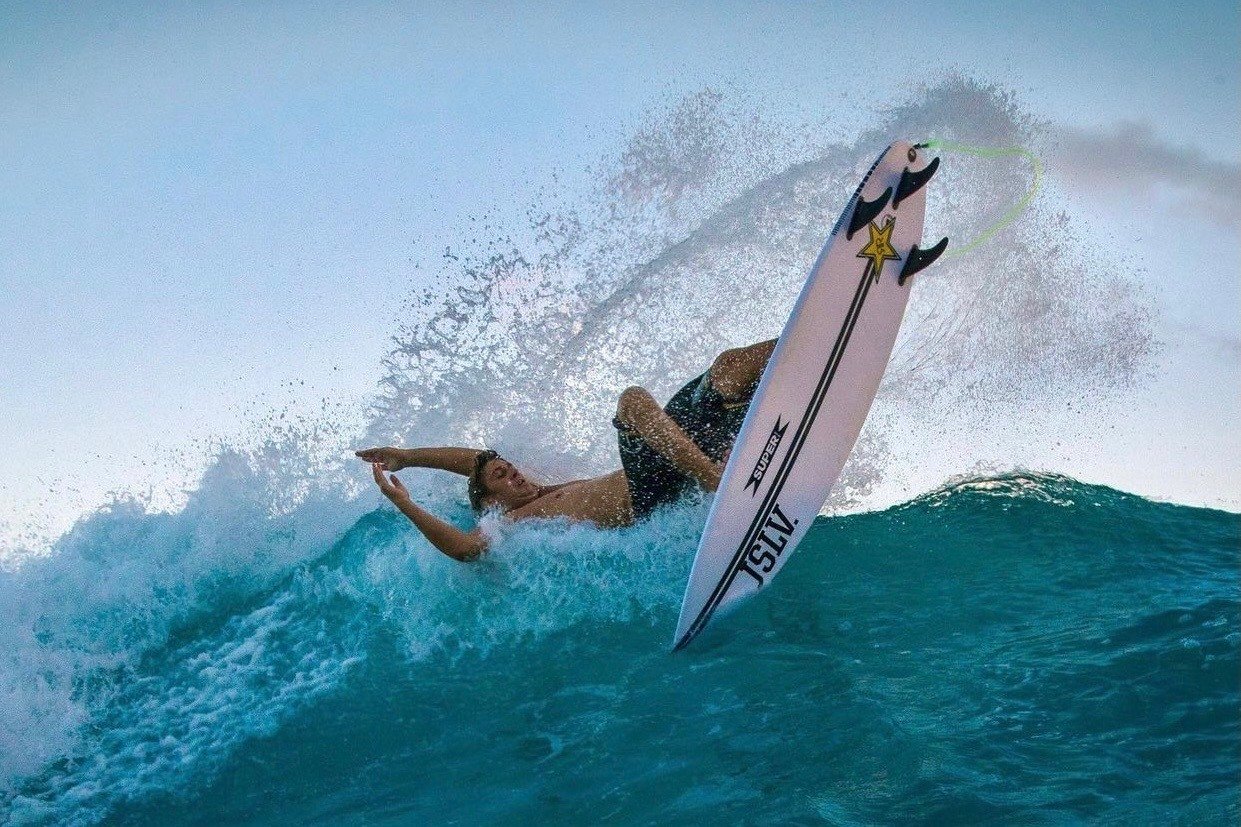

How true innovation comes from being different
Besides being accomplished athletes and competitors, surfer Clay Marzo, skater Tony Hawk, and high-jumper Dick Fosbury may not appear to have much in common. But look closer and you will see that their stories, taken together, amount to a real-world textbook on innovation. Their stories are signposts pointing to how the creative act is born. And they suggest that certain personalities – outsiders, nonconformists, those who march to the beat of their own drum – may be more conducive to large leaps in creativity.
In fact, were it not for being different and seeing the world differently, Marzo, Hawk, and Fosbury would, arguably, not have succeeded in bringing innovation and change to three sports.
Clay Marzo, Professional Surfer

Photo credit: Leilani Zerkle
Clay Marzo is widely regarded as one of the most exciting and creative surfers in the world, and one of the best tube riders. Now 31, Marzo was only 15 when he became the first surfer in the history of the National Scholastic Surfing Association (NSSA) to receive two perfect 10s. He also won the NSSA national title.
But…
According to media reports, Marzo had trouble connecting with kids at school and later, with fans and sponsors. He didn’t have a lot to say. And when he did speak, he was known for being brutally honest. There was something about him that was different.
“His connection is uncanny. Sheer genius. Like Picasso, DaVinci, Hawking or Einstein,”
wrote one appreciative YouTube commenter after viewing a Marzo surfing video.
Kelly Slater is widely acknowledged as the most accomplished surfer in the history of the sport. Here he is in the documentary, “Clary Marzo: Just Add Water below” commenting on Marzo: “He knows things I don’t know. He knows things all these other guys I’m surfing with don’t know.” Says Dane Reynolds, a highly regarded surfer also known for his creativity in the water: “Marzo’s a true original.”
In 2007, Marzo was diagnosed with Asperger’s syndrome, which means he’s on the autism spectrum. It has affected his ability to communicate, interact socially, and fit in. Some people with Asperger’s, however, are known to develop a sphere of excellence, or special interest, that they acquire as a result of intense and prolonged focus and devotion to one activity.
This appears to be the case with Marzo. It’s not unusual for him to spend six or eight hours straight in the water; on land, his mother says, he’s noticeably less at ease. Andy Irons, the late pro surfer and world champion, said he’d never seen anyone surf as much and as frequently as Marzo. Kelly Slater summed it up this way: “If Marzo’s not sleeping, he’s getting barreled.” Or he’s spending hours in the evening watching video of himself getting barreled; breaking each wave down, carefully analyzing each gravity-defying maneuver.
It’s no accident that a guy who sees things and feels things a little differently than the rest of us was able to create and contribute something truly new, exciting, and innovative to a sport that dates back to the ancient Polynesians.
Dick Fosbury, Olympic High Jumper
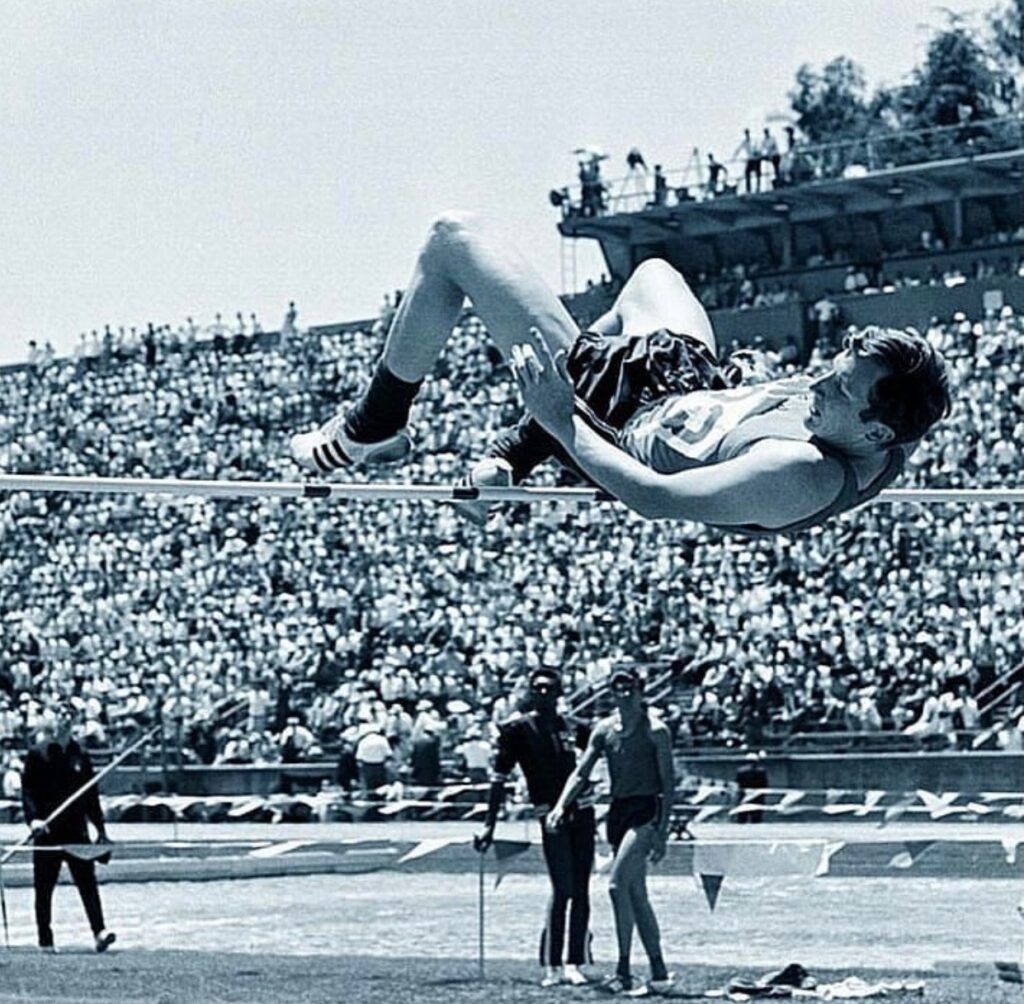
Oregonian Dick Fosbury is one of the most important athletes in the history of track and field. His innovative, backward-style jump, which became known as the “Fosbury Flop,” revolutionized high jumping.
But…
Growing up, there was something different about Dick Fosbury. According to media reports, he was a civil engineering major, a little awkward, and had bad feet, whatever that means. Despite his 6’4” frame, he was a subpar athlete who failed to make his high school basketball team.
Everything about him, it seemed, from his jumping style to his shoes, was unconventional.
But, whether in spite of or because of his eccentricities, Dick Fosbury perfected his Fosbury Flop technique, which soon paid off, leading him all the way to the 1968 Olympics in Mexico City, where he set an Olympic record and took home the gold medal.
And yet there’s more to the story. The young high jumper, it turns out, completely missed the opening ceremony at the Olympics. His explanation is revealing. Fosbury explained in a Story Corps video that the night before the Olympics opening ceremony, he and some friends joined local Mexicans at the pyramid for an awe-inspiring celebration.
The Olympic torch was being brought from Olympia, Greece, where the flame was lit, to Mexico City. In Teotihuacan, about 25 miles outside of Mexico City, the flame was installed on the first level of the Pyramid of the Moon to commence a spectacular Aztec ritual known as the New Fire Ceremony.
“They had a ceremony and a band and music and we stayed out there all night,” says Fosbury. The next morning, because of a traffic jam from hell, he couldn’t get back in time for the opening ceremony.
“I missed that celebration,” he concedes, “but, you know, I had my own experience with it.” Having an authentic, meaningful experience was more important to Fosbury.
Tony Hawk, Professional Skateboarder

Photo credit: Joe Gall
Let’s do a game of word association with skateboarding. The first thing that comes out of most everyone’s mouth is Tony Hawk. His name, after all, is pretty much synonymous with modern skating.
Hawk entered his first contest at age ten, turned pro at 14, and by 16 was already considered one of the top skaters in the world. In a pro career that spanned 17 years, he won more than 70 skateboarding contests, dominated the X Games, became a successful entrepreneur, and founded a highly regarded foundation.
But…
If you thought growing up, Hawk was a bad-ass skater kid who terrorized other kids, or alternatively, was the cool, popular kid who got all the girls—in both cases, you’d be wrong.
As a kid, Hawk was intelligent and hyperactive. He was already showing promise as a violinist when his passion for skateboarding quickly usurped it. He told The Guardian:
“At some point I told my music teacher that I’m skateboarding and competing on the weekends, and he flat out told me that I have to choose violin or skateboarding.”
When Hawk started skating, he quickly established his outsider bona fides. “I’ve lived with so much ridicule my whole life. When I was a kid, I was doing this outcast activity, so I was already not cool in school.”
If that wasn’t enough, he was also alienated by his fellow skaters. “I was like a scrawny little kid with a robotic style, because I was focusing on tricks.” Little Tony Hawk was an “outcast in this outcast activity, and it was really isolating,” he said in an interview on the “The Joe Rogan Experience” podcast below.
How did Hawk deal with his outsider status? He owned it. He didn’t care what other kids thought or said about him. That distance and independence from the flock helped him, over the years, to think differently and see things others couldn’t see. It was a vantage point from which he would become one of the most innovative and popular skateboarders the world has seen.
Commonalities
The commonalities among these three change makers – Marzo, Fosbury, and Hawk – are fascinating. Their stories provide a window into the origins and nature of creativity; they help us better understand the internal and environmental factors that produce creative people and lead to creative breakthroughs. Here are some common themes that cut across their stories:
1. Outside the Box
Creativity, of course, means different things to different people. But creating something that previously did not exist fits most everyone’s definition. Fosbury, Marzo, and Hawk each ventured outside their safe box of convention and normalcy and proceeded to create something new and differentiated.
While all three are gifted athletes, their ability to improvise – to invent a new move, to push the “what is possible” envelope – is what defines them. Their creativity revolutionized their respective sports and took them to a new level.
Consider:
Dick Fosbury’s backward approach to the high jump, the “Fosbury Flop,” was a complete paradigm-shifter. Over 50 years later, it remains the go-to technique for Olympic high jumpers.
Clay Marzo’s complex choreography performed in rushing mountains of water epitomizes his originality. Take, for example, his gravity-defying layback, or “Clayback,” and the “Marzo Reverse,” where he’s somehow able to reverse his momentum in mid-flight, swing his board in a circle, and land on top of the wave backwards and facing away from the beach.
Tony Hawk is widely credited with inventing nearly 100 vertical maneuvers and tricks, including a “720,” which involves launching off a vertical ramp and rotating twice in mid-air. He is also acknowledged as the first skater to pull off a “900,” during which a skater rotates 900 degrees – about 2-1/2 turns – before landing.
2. The Traditionalists Feel Threatened
Hawk and Fosbury both challenged longstanding traditions in their respective sports and were alienated, mocked, and ridiculed long before their respective approaches became standard operating procedure.
Fosbury received significant criticism from his coaches and the press for his unusual jumping technique. After viewing his backwards-style high jump, one newspaper called him “the world’s laziest high jumper,” while others accused him of cheating—the same allegation made against Tony Hawk.
That’s right, the old guard skaters dismissed Hawk as a “circus skater,” because he liked to do tricks like hand plants and aerials while “the cool kids” skated cement pools, essentially mimicking the movement and style of surfers.
“It wasn’t normal. It wasn’t the cool way to skate,” Hawk told Rogan.
Later, when Hawk started experimenting with a unique way of grabbing his board during an aerial, the skating establishment called him a cheater. They felt his technique gave him an unfair advantage, allowing him to soar higher than the other skaters. “Like they literally wrote that in Thrasher magazine,” he told Rogan with disbelief. “It’s just like, well, Tony Hawk cheats.”
The kneejerk resistance to anything new is a reaction that all change-makers become accustomed to. Fosbury biographer Bob Welch saw the same phenomenon, but against a 1960s counter-culture backdrop. “In some ways,” Welch wrote in The Wizard of Foz: Dick Fosbury’s One-Man High-Jump Revolution, “his story is kind of a microcosm of the times, in that he was defying authority. Everyone who rebels is basically saying there’s a better way to do things. We don’t have to do things the same way.”
3. The Normalizing of Weird: When Outsiders Become Insiders
You see a shift occur, when people and ideas initially perceived as strange or odd are eventually embraced and adopted by the mainstream.
In his interview with Joe Rogan, Hawk talked about his journey from outcast to trendsetter, as his once-controversial techniques became widely adopted, sometimes by the very people who had initially resisted them: “A lot of my peers who were my age,” he said, “figured the same technique out and then we just kind of took over. I became the way to skate.”
Hawk is credited – or blamed, depending on your perspective – with making skating more mainstream. He even guest-starred in an episode of The Simpsons and won a Teen Choice Award.
It’s a familiar pattern: outsiders becoming insiders and their radical ideas becoming the regular way of doing business.
Fosbury’s story reveals a similar arc. His disruptive innovation – the Fosbury Flop – evolved from “weird” and “ugly” and “cheating” to widespread adoption. Consider this: Since 1972, every high jumper who has won an Olympic gold medal or world record, without exception, has employed the Fosbury Flop technique.
Fifteen years ago, it seemed Clary Marzo the outsider was on his way to becoming a surf-industry insider. He competed on the tour, was heavily sponsored, received exposure in the magazines and websites, made head-turning edits, got to travel and see the world, and was the subject of a documentary.
But, as it turned out, being an insider was not in Marzo’s cards. His discomfort with social interaction and his need to be free – to live in the moment – was at odds with the life of a pro surfer, which is carefully prescribed, controlled, and structured. The stress of the professional tour, the endless travel, airport hopping, and all the social obligations that accompany being a pro surfer, would take a toll on anyone.
You can see why, for someone with Asperger’s, it would be almost intolerable.
Marzo is now a free surfer, meaning that he generally doesn’t participate in contests and instead surfs just for fun, often at exotic locations across the world. He had back-to-back knee surgery, lost his main sponsor, and, as if that wasn’t bad enough, $400,000 – his life savings – was stolen by his former bookkeeper.
But one thing remains: he still has surfing; no one will ever rob Clay Marzo of his beautiful, blissful barrels, which he calls “toys from God.”
4. Necessity is the Mother of Invention
Each of these three athletes encountered limitations which, rather than derailing them from their goals, spurred the development of their creative powers.
Prior to Dick Fosbury’s ascendancy, high jumpers relied on different techniques, like the straddle jump, to clear the high jump bar. The problem for Fosbury, as he assessed the competitive landscape in the late 1960s, was that he lacked the strength and flexibility that those techniques demanded. He simply couldn’t compete with top athletes.
This dilemma became the catalyst for his creative breakthrough that would become known as the Fosbury Flop: Rather than jump face forward using the “straddle” technique, he jumped off the “wrong foot,” arched his back, and soared over the bar backwards.
One of the lessons, according to Fosbury biographer Bob Welch, is that, “Desperation can sometimes be a really good thing. When we’re desperate sometimes that’s when our imaginations start working and we find solutions we wouldn’t have otherwise even dreamed of.”
Similarly, Tony Hawk’s physical limitations, together with his outsider status, drove his creativity.
Being a “super scrawny, super short kid” (who would later grow into his 6’3” frame) made it a lot harder to muscle his board into the air, putting him at a distinct disadvantage in the arena of pool skating.
“I didn’t have the body to be able to do it anyway,” he told Rogan.
Instead, he taught himself to do tricks, like maneuvering his skateboard by spinning it under his feet. Eventually, he taught himself how to launch into the air without grabbing his board right away, a creative adjustment that allowed him to go higher than other skaters. Eventually, Hawk became a pioneer of modern vertical skateboarding.
One could argue that Marzo’s creativity in the water is also driven by necessity. As ESPN put it, “The very thing holding him back – Asperger’s syndrome – is also what makes him great.” One thing is clear, he needs to surf – it’s his oxygen. “He’s as alive as one can be in the thrill of the ocean,” said his mother Jill, “and I watch as he struggles for air out of the ocean.”
It may be that Marzo’s limitations are also liberating. They have, perhaps, helped enable him to not only become an off-the-charts surfer, but to also forge an intuitive and remarkably close connection with the natural world, especially the ocean.
5. Intuition vs. Intelligence
All three of these athletes are highly intelligent, but they largely attribute their leaps in innovation to intuition. Fosbury told Sports Illustrated that his creative breakthrough was not the result of deep analysis. Though knowledgeable about physics, his discovery, he suggested, shouldn’t be likened to that of a physicist solving a problem. “I didn’t change my style; it changed inside me.”
Similarly, Jill Marzo Clark says her son speaks through his body. “Clay does not live in his ego. Clay is pure, raw; he’s not going to tell the story with words.”
Marzo’s intimate understanding of how to tap the energy of a breaking wave seems almost innate, say his peers in the professional surf community.
When Marzo’s surfing, it seems like “he has no clue what he’s going to do until it’s done. It’s straight instinct,” said Dane Reynolds. Andy Irons once said of Marzo: “He goes just on pure feeling.” Similarly, 2001 world champion C.J. Hobgood marveled at Marzo’s ability to do “his best surfing when he’s totally not thinking.”
Was Marzo born with an intuition – or instinct – for the ocean? His mother says the only way to get baby Clay to sleep was to put him in a warm bath four times a day. By the age of five, he was already riding a short board (My son, who has autism, also has an amazingly close connection with the ocean.)
Tony Hawk also started early. In 1977, when he was nine years old, his older brother Steve gave him a skateboard, which changed his life (and now resides in the Smithsonian’s National Museum of American History.)The bright, hyperactive Hawk now had a way to capture and concentrate all of that wild energy.
Like Marzo and Fosbury, Hawk’s ability to see what’s right around the bend – call it intuition or creativity – translated to success not just as a professional skateboarder but also as an entrepreneur and nonprofit leader.
In the late ‘90s, Hawk had been trying to pitch a skateboarding video game. Problem was, none of the executives who could make it happen were biting. “They just didn’t get it,” Hawk told Sports Illustrated. Unlike Tony Hawk, they didn’t have the ability to see around the bend.
Belatedly, in 1999, a company got its act together and collaborated with Hawk to develop what would become Tony Hawk’s Pro Skater, one of the most popular and best-selling video game series of the early 2000s.
**
Anyone can be creative, of course, but it helps being different, to feel things or see things differently, to live differently, to be on the outside instead of the inside, to question rather than accept, and to experiment with new ways of doing things, regardless of what the “cool kids” or establishment thinks of you.
And rest assured, if you have the balls to throw away the script, to improvise, to do things your way, they will mock you. When that happens, true innovators don’t let the naysayers destroy or derail them.Instead, they double down, until the establishment catches up.
Feature image credit: Adam Klevin
Last updated on Jul 21, 2021Have you subscribed to our Newsletter or Podcast? Listen to us on Apple Podcast and Spotify and follow us on Facebook, Instagram Twitter and YouTube.
